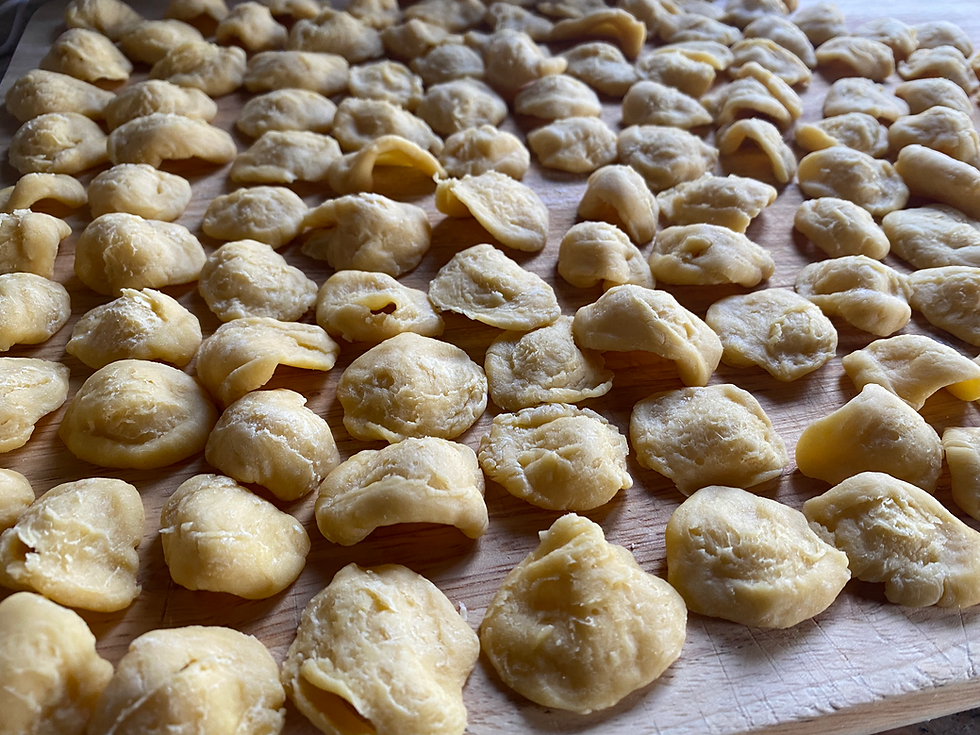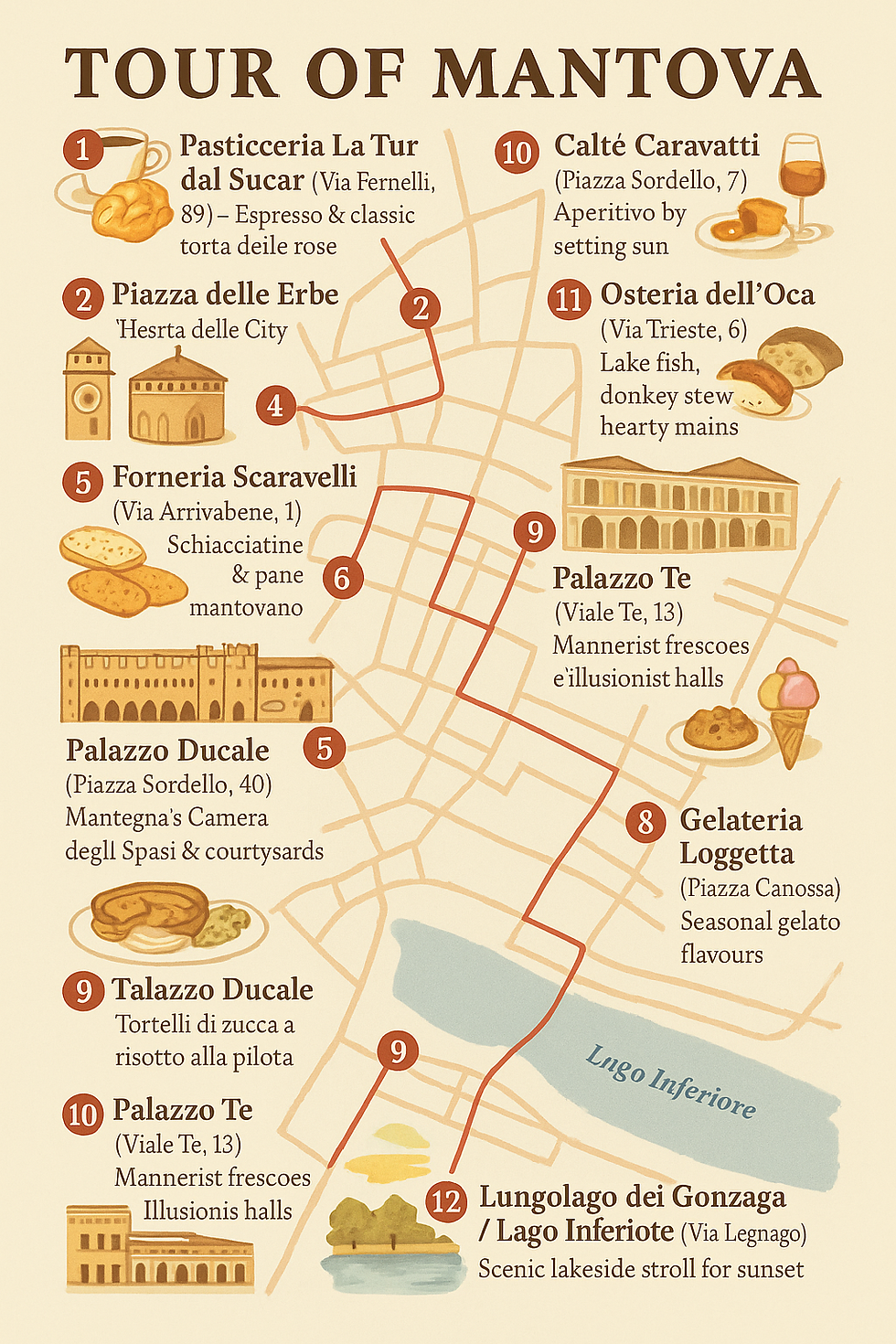Puglia’s Orecchiette: A Pasta Shaped by Thumb and History
- Made al Dente

- Jul 6
- 5 min read

In the backstreets of Bari Vecchia, the old quarter of Puglia’s sun-washed capital, women sit at wooden tables, shaping pasta with the rhythmic press of their thumbs. Each orecchietta — “little ear” — is handmade with a flick and a drag, coaxed from a rope of dough. The air smells faintly of semolina and sea breeze, and conversation flows as easily as wine. This is no culinary performance for tourists. It’s a tradition — one rooted in centuries of history, passed from mother to daughter, shaped not by machines but by memory.
Origins: Where the Little Ears Began
Puglia, the heel of Italy’s boot, is a land of ancient olive trees, wind-swept plains, and wheat fields that ripple gold under the southern sun. It’s here, in this stark and stunning landscape, that orecchiette was born — a pasta perfectly suited to its environment and people.
Historians trace orecchiette back to the Middle Ages, possibly influenced by the Jewish communities of Provence who made a similar round pasta known as pasta nègre. Others

suggest roots even further back, to Roman lagana or the finger-shaped pastas of ancient southern Italy. By the 12th century, documentation begins to appear linking the pasta to Bari and nearby towns.
But orecchiette is not just a product of time. It is a product of wheat — specifically grano duro, or durum wheat, which thrives in Puglia’s arid soil. The region is Italy’s breadbasket, producing some of the country’s finest semolina. This robust, sun-hardened grain gives orecchiette its signature texture and earthy flavor.
In a region where eggs were once a luxury, the dough — made only with semolina and water — represented both necessity and elegance. It was pasta stripped to its essence.
“The Bread and Land Are One”: Wheat and Identity
Wheat in Puglia is more than a crop — it’s a metaphor. The Apulian plateau, or Tavoliere delle Puglie, is among Europe’s most fertile wheat-producing areas. From this land came the grain for bread, pasta, and survival. It sustained generations and shaped a culture rooted in the rhythm of sowing, reaping, kneading, and feeding.
Carlo Levi, in his memoir Christ Stopped at Eboli, described the southern fields with reverent clarity: “Here, time is motionless, and wheat ripens beneath a sun that never sets.”
In every orecchietta, there is a trace of that timeless landscape — a thumbprint of history shaped from wheat and will.
How It’s Made: The Thumbprint of Puglia
At the heart of orecchiette lies a tactile tradition. The dough is kneaded until elastic, then rolled into slender ropes. From these, small discs are sliced and pressed with the thumb or the side of a knife, then gently flipped inside out. The result is a small, cupped shape with a ridged exterior and a tender interior — ideal for capturing sauce.
Unlike many pastas shaped by bronze dies or industrial molds, orecchiette remains fiercely handmade in Puglia, especially among the older generation. The technique is meditative, almost musical — a repetitive gesture that becomes second nature over time. Some compare it to rosary prayer, others to sewing: a woman’s work, both sacred and everyday.
The pasta dries on wooden boards or mesh trays, sometimes outside under the Apulian sun. It’s a ritual of both nourishment and pride, anchoring families and neighborhoods with every batch.
Iconic Expressions of Orecchiette
Though orecchiette is known across Italy today, it is inseparable from its native soil. In Puglia, it's more than a shape — it’s an emblem of identity, served in a variety of beloved preparations:
Orecchiette con le Cime di Rapa: The most iconic version, this dish pairs the pasta with bitter turnip greens, garlic, anchovies, and chili flakes. Earthy, pungent, and deeply satisfying, it captures the soul of southern Italian cooking.
Orecchiette al Sugo di Carne (alla Barese): A Sunday staple in Bari, this version features tomato sauce slow-cooked with pork ribs or braciole (stuffed meat rolls). The pasta absorbs the deep richness of the ragù, making each bite tender and robust.
Orecchiette con Pomodorini e Ricotta Forte: A simpler dish made with cherry tomatoes and ricotta forte — a pungent fermented cheese unique to the region — showcasing the contrast of sweetness and bite.
Each variation speaks to different layers of Puglia’s food culture: the land, the livestock, the economic rhythms of feast and famine.

Why It Still Matters
In an era of mass-produced pasta and globalized food culture, orecchiette stands as a quiet rebellion. Its survival is not nostalgic — it’s practical, sustainable, and deeply communal.
For Pugliesi, especially in small towns like Cisternino, Altamura, and Locorotondo, making orecchiette is a way of keeping roots alive. Young people are learning again from their elders, not just to cook but to connect. Chefs across Italy — and beyond — are spotlighting the pasta in modern menus, often returning to its simplest forms to honor its origins.
It’s also a symbol of the broader movement toward regional authenticity. When you make or eat orecchiette, you’re not just tasting pasta — you’re tasting a place, a history, and a rhythm of life.
Where to go: Nunzia in Bari Vecchia
Along a narrow stone alley of Bari Vecchia, just wide enough for a Vespa and a stray cat, you’ll find Signora Nunzia Caputo, seated at a well-worn wooden table that has seen more pasta than paperwork. She’s in her seventies, slight but commanding, her fingers moving faster than most people can think. With each flick of her knife and press of her thumb, orecchiette take shape, neat and proud in rows like little amphitheaters waiting for sauce.
Nunzia has been making pasta since she was a girl, taught by her mother and her mother before that. She doesn’t own a restaurant, doesn’t do cooking classes, and barely tolerates tourists with cameras — unless they’re quiet and respectful. “La pasta si fa con silenzio e mani calde,” she once muttered — pasta is made with silence and warm hands.
She sells her orecchiette from her front door, stacked in paper trays, often alongside bundles of cime di rapa wrapped in newspaper. Locals come in the early morning to avoid the sun; travelers lucky enough to arrive before she sells out walk away with more than just pasta. They carry a little piece of Bari — humble, handmade, and utterly alive.
Frequently Asked Questions
Why is orecchiette shaped like an ear?
The name orecchiette means “little ears” in Italian, referring to the pasta’s concave shape — perfect for holding chunky sauces or vegetables.
Is orecchiette always made by hand?
Traditionally, yes. While industrial versions exist, true Apulian orecchiette is still made by hand, especially in southern towns like Bari and Lecce.
What flour is used for orecchiette?
It’s typically made from semola rimacinata di grano duro (finely milled durum wheat semolina), grown abundantly in Puglia.
Conclusion
Some traditions are kept not because they are efficient, but because they are essential. Orecchiette is one of them — a pasta shaped not just by thumbs, but by the spirit of a region. It is the echo of generations, the weight of time in the palm of your hand, and the taste of southern Italy in its purest form.


